7 Reasons to Replace Your LMS
Written by
Tigerhall Team
Posted on
Last modified on

Introduction
There comes a time in every organization's life when it needs to replace its Learning Management System or LMS. 48% of companies would like to find a new LMS. Approximately 43% would like better social tools and better means of collaborating. While an LMS is a vital part of any learning and development program, there may be times when it is no longer the best option for your company. Here are seven reasons you should replace your Learning Management System.
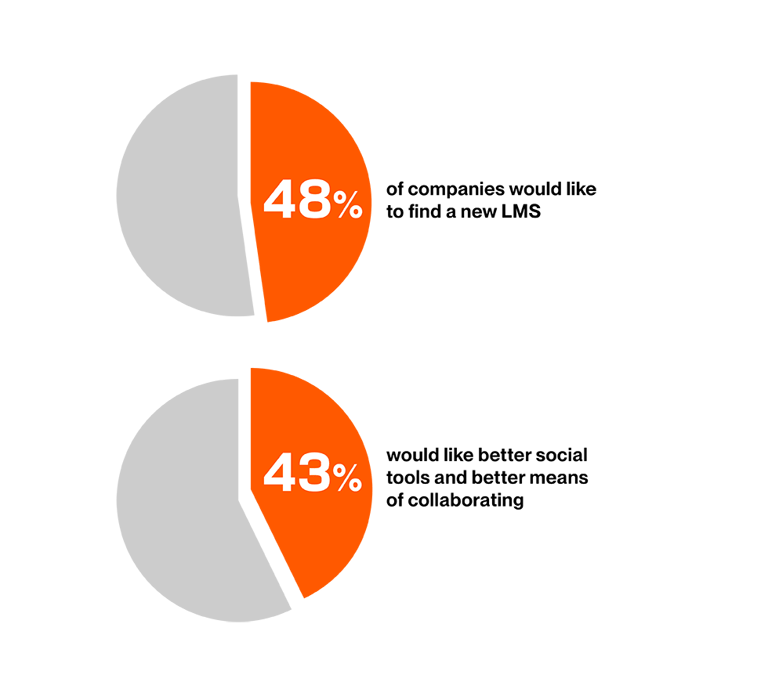
Reasons to replace an LMS
Your current LMS is no longer meeting your needs
If you're like many companies, you probably use a Learning Management System, or LMS, to manage your learning and development program. However, there may come a time when an LMS is no longer the best option for your company. Here are 5 glaring signs that your LMS is no longer meeting your needs:
It's difficult to keep up with the latest trends with your current LMS
If you're having trouble keeping up with the latest trends in learning and development, then it's time for an upgrade. A new LMS will give you access to the latest experiences, features and technologies.
The cost of maintaining your current LMS is becoming too expensive
If the cost of maintaining your current LMS is becoming too expensive, it may be time to find a new system. There are many affordable options available, so there's no need to stick with an outdated system that is missing key functionalities just because it's familiar. Many times cost is pinpointed as a factor because tying L&D to ROI is challenging.
You're not getting employee engagement on your current LMS
If you're not getting employees to engage with your current LMS, it may be time for an upgrade. A new system can provide you with more engaging and personalized features, allowing employees to get the most out of your learning and development program.

You're not able to track employee progress with your current LMS
If you're not able to track employee progress adequately with your current LMS, it's time for an upgrade. A new system will have better tracking capabilities so you can see how individual employees and teams are performing and identify personalized areas for improvement.
Your company is growing rapidly and your current LMS can't keep up with demand
If your company is growing rapidly and your current LMS can't keep up with new hires, process transformation or strategic pivots, it's time for an upgrade. A new system will be able to handle more users, new priorities and provide faster performance.
It's difficult to keep up with updates and changes to the system
It can be difficult to keep up with updates and changes to a Learning Management System. This is especially true if you're not the person who is responsible for maintaining the system. With so many updates and changes happening on a regular basis, it can be tough to keep track of what's new and what needs to be done. In addition, it can be difficult to find the time to make these updates and changes. 66% of LMS users want programs with better customer and technical support.
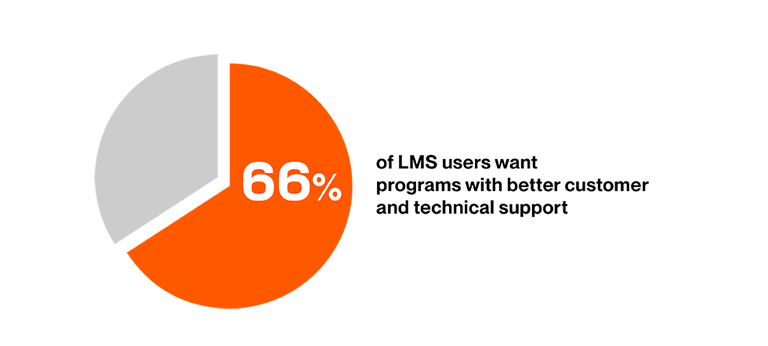
This can result in an LMS that is no longer effective or efficient. If this is the case, it may be time to replace your Learning Management System.
You're not getting the most out ROI of your LMS investment
You may be wondering if you're getting the most out of your LMS investment. Chances are, you're not. Even if you've chosen the right system and implemented it well, there are ways to make it even more effective for your team.
If you're not getting the most out of your LMS investment, it may be because you're not measuring the right things. ROI is important, but it's not the only thing you should be looking at. To maximize ROI, it's important to measure both the quantitative and qualitative impact of your learning programs.
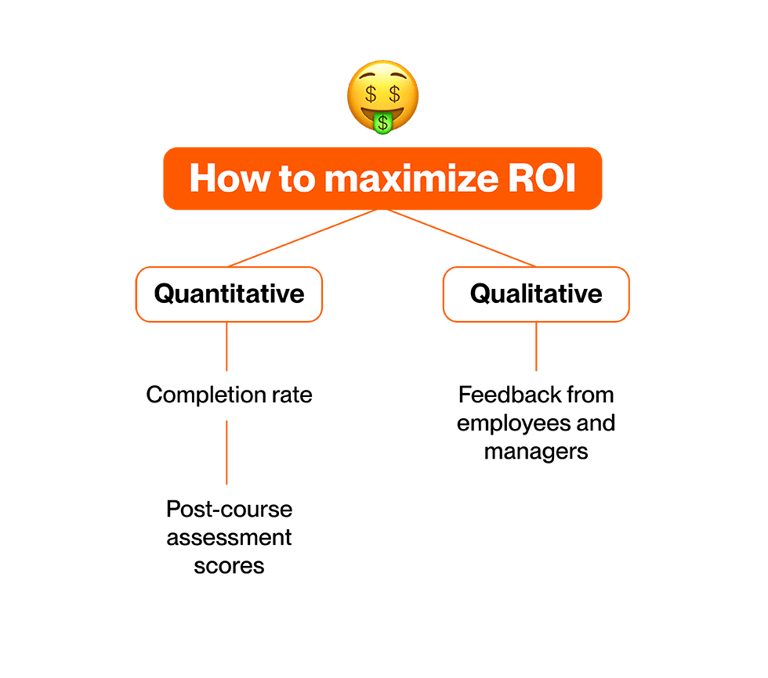
By quantitatively measuring things like completion rates and post-course assessment scores, you can get a sense of whether learners are retaining information and applying it to their job. Qualitative data, such as feedback from employees and managers, can give you insights into how learning is impacting job performance.
By taking both types of data into account, you can get a comprehensive picture of your LMS's impact and make adjustments accordingly.
The system is no longer user-friendly
If your organization's learning and development program is no longer user-friendly, it may be time to replace your Learning Management System. One sign that your LMS is no longer working well is if users are having trouble accessing courses or completing assignments. If the interface is difficult to navigate or if there are too many features, your users may become frustrated and stop using the system altogether. Another reason to replace your LMS is if it's not compatible with the latest technologies. If you're using an LMS that's several years old, it may not be compatible with newer devices or operating systems. Finally, if you're not getting the results you want from your current LMS, it may be time to try something new. A replacement LMS can help you achieve your training goals and improve employee productivity.
A common complaint among users of learning management systems (LMS) is that they are not user-friendly. While there are a number of factors that contribute to this problem, there are three primary reasons why most LMS are not user-friendly. First, many LMS are designed with a focus on the needs of administrators and educators rather than learners. As a result, the interface is often cumbersome and difficult to navigate. Second, most LMS are designed to be used with a specific type of learning content, such as e-learning courses or textbooks. This can make it difficult for learners to access and use the system if they need to use different types of materials. Finally, many LMS do not provide adequate support for mobile devices, meaning that learners may have difficulty accessing and using the system when they are away from their desktops. As a result of these issues, it is no surprise that users often find LMS to be frustrating and user-unfriendly.
It's hard to find the right information or training materials, at the right time
It can be hard to find the right information or training materials on Learning Management Systems because there is a lot of passive content available. With so many options, it can be difficult to determine which resources are the most relevant and useful for your needs. Additionally, different Learning Management Systems offer a wide range of features and functions, so it can be challenging to determine which one is right for your organization.
A typical LMS will provide features such as the ability to create and manage courses, upload documents and presentations, assign quizzes and assignments, and generate reports. However, despite the widespread use of LMS systems, many employees still find it challenging to find the right information or training materials when they need it. There are several reasons for this.
First, most LMS systems are designed for use by trainers and instructional designers, rather than learners. As a result, the user interface can be confusing and difficult to navigate. Second, many LMS systems lack robust search capabilities, making it hard for users to locate relevant content. Finally, most LMS systems do not provide recommendations or suggestions for further learning, meaning that users often have to rely on trial and error to find what they need.
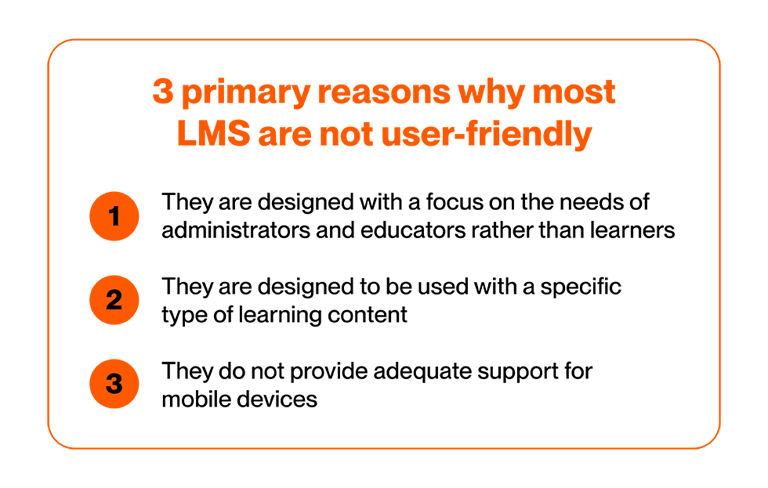
Despite these challenges, there are a number of ways to improve the searchability of an LMS system and make it more user-friendly for learners. For example, implementing tagging and keyword taxonomies can help users quickly locate relevant content. Adding social features such as community discussions, mentorships, ratings and reviews can also be helpful in guiding users to the most useful resources.
You're not using all of the features available to you
Many organizations don't use all of the features available to them in their Learning Management Systems. This can be due to a variety of reasons, such as not being aware of all the features available, not knowing how to use them, or simply not having enough time to explore all the options. However, it's important to make use of all the features your LMS has to offer, as they can help improve your learning and development program.
Some of the features you may not be using include customizing your course content, creating assessments, and tracking learner progress. By making use of these features, you can create a more effective and efficient learning experience for your employees. So take some time to explore all the features your LMS has to offer and see how they can benefit your organization.
You need more flexibility with your LMS
It's no secret that technology is constantly evolving and businesses must adapt in order to keep up. The same is true for Learning Management Systems. A company's needs may change over time and an LMS that was once a perfect fit may no longer meet their requirements.
If you're finding yourself in this situation, here are four unmissable symptoms you need more flexibility with your LMS:
You're not able to customize the system to meet your staff's needs
One of the challenges of using an LMS is that it can be difficult to customize the system to meet the specific needs of your staff. In many cases, LMS platforms are designed for use by large organizations with significant resources. As a result, they may not offer the flexibility or functionality that smaller businesses need. In addition, LMS platforms can be complex and challenging to learn, which can make it difficult for staff members to get the most out of the system. As a result, it's important to carefully consider your organization's needs before selecting an LMS platform. Otherwise, you may find yourself stuck with a system that doesn't meet your staff's needs.
The system is difficult or cumbersome to use
While an LMS can be a valuable tool for streamlining the process of delivering online Learning content, many users find them difficult and cumbersome to use. In this article, we'll explore some of the common issues with using an LMS and offer some suggestions for making the most of your learning management system.
One of the biggest complaints about using an LMS is that it can be difficult to navigate. The average LMS features a wide range of different menus, icons, and options, which can be overwhelming for users who are new to the system. Furthermore, even experienced users often find it difficult to locate the specific features or options they're looking for within the vast array of menus and icons. To make matters worse, many LMSs feature different interfaces for different modules or features, which can further contribute to the feeling of being lost in a sea of options.
Another common issue with using an LMS is that it can be time-consuming to input and update course content. For instance, if you need to make a change to a course title or description, you may need to edit several different fields in order to complete the update. This can become even more complicated if you need to make changes to multiple courses at once. Additionally, uploading multimedia content such as videos or images can also be time-consuming, particularly if you need to do so manually.
It's no longer providing value to justify your budget
It's no secret that the cost of running any learning program can be high. Between the initial investment in an LMS, the ongoing costs of hosting and maintaining the platform, and the price of course content, eLearning can quickly become a budget-buster. In recent years, Learning Management Systems (LMS) have become increasingly popular in the corporate world. Many companies have invested in these systems in order to provide their employees with a convenient way to access training materials and courses. However, as LMS technology has evolved, many of these same companies are now finding that their investment is no longer providing the value it once did. In some cases, the software is no longer compatible with newer versions of other software applications. In other cases, the LMS is simply not able to keep pace with the ever-changing needs of employees. As a result, many organizations are now re-evaluating their use of Learning Management Systems and considering alternative options. While an LMS can still be a valuable tool for training and development, it is important to carefully consider whether or not it is still providing the best return on investment for your company.
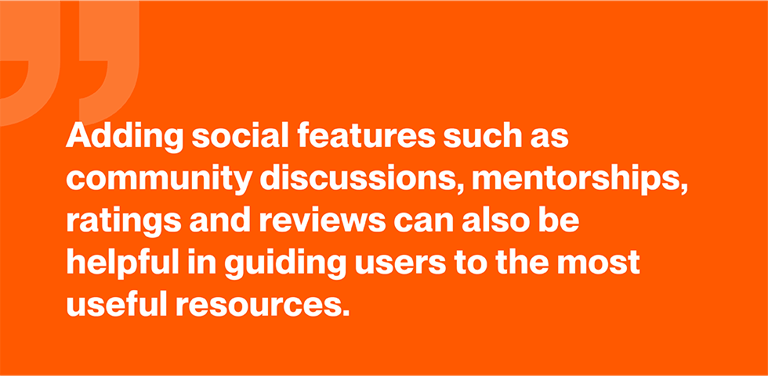
It's no longer meeting your organization's goals or objectives
When your organization first chose its learning management system (LMS), it probably did so with specific goals and objectives in mind. But as time has passed, those goals and objectives may have changed - or the LMS itself may no longer be up to the task. If you're finding that your LMS is no longer meeting your needs, it may be time to consider a change.
Conclusion
While an LMS can still be a valuable tool for training and development, it is important to carefully consider whether or not it is still providing the best return on investment for your company. If you're finding that your LMS is no longer meeting your needs, it may be time to consider a change.